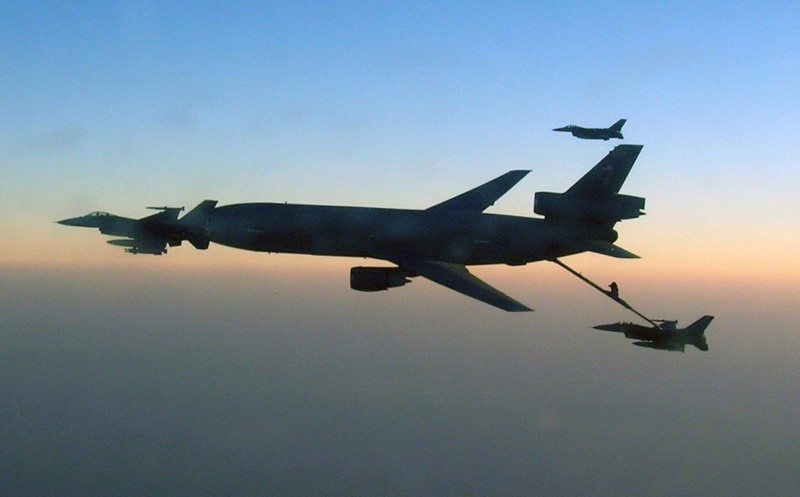Mobility Airmen may have found a way to conserve Air Force resourses and help preserve the environment.
Prolonged and repeated KC-10 air refueling operations in desert climates can degrade the aircraft engines. But the Air Force now uses a new KC-10 engine cleaning process, which is projected to save aviation fuel and decrease maintenance failures.
“Desert climates cause a buildup of silica and sand on engine blades, which heat up and melt to the blades during operation.” said Steven Slatter, with the AMC Fuel Efficiency Office. “This cumulative effect can cause engine performance to degrade more rapidly, causing engines to run hotter and less efficiently, and result in engines needing maintenance at a quicker interval.”
In an effort to lower exhaust gas temperatures and extend the engine service life, the engines are now cleaned during depot-level maintenance using a solution that includes bituminous coal, a mild abrasive that is sprayed to remove dirt and deposits from engine airfoils, Slatter said.
During a test of six KC-10 CF6-50 engines, AMC, in close coordination with the KC-10 System Program Office at Oklahoma Air Logistics Center, the engine cleaning “… resulted in an average 16-degree Celsius exhaust gas temperature reduction and also reduced fuel flow by an average of 335 pounds per hour,” Slatter said.
“While benefits of fuel flow improvements enable aviation fuel savings to begin as soon as the aircraft begins flying, expected savings from engine service life improvements take longer to be realized,” he said. “Air Force engine experts expect that (the new cleaning process) will extend the service life of the engine, but it hasn’t been validated yet.”
The Air Force is the largest user of energy in the DOD, with Air Force aviation operations accounting for 79 percent of the service’s energy usage, figures show. Mobility air forces operations make up 60 percent of Air Force aviation fuel used, or approximately 39 percent of all DOD aviation fuel consumption.
AMC’s Fuel Efficiency Office regularly reaches out to tens of thousands of people across the mobility enterprise to seek out and implement great ideas for efficiency. Whether an initiative is inspired by the Berlin Airlift, or simply because it is the right thing to do for the Air Force and the DoD, energy is an operations enabler for the Air Force and the FEO has a mission to consolidate and lead aviation fuel conservation efforts throughout the mobility air forces while maximizing effectiveness.
Col. Kevin Trayer, the AMC Fuel Efficiency Office director of operations, said “effectiveness in mobility air forces” is the cornerstone of what AMC is doing in the fuel efficiency effort. “Getting the supplies to the warfighter on the ground is our first priority. As we accomplish that, we also exercise the responsibility of being good stewards of our nation’s resources.”
More than 9,010 tanker sorties have been flown this year in support of operations in the U.S. Central Command area of responsibility, according to a Combined Forces Air Component Commander report.
(Master Sgt. Scott Sturkol, AMC Public Affairs, contributed to this report.)










